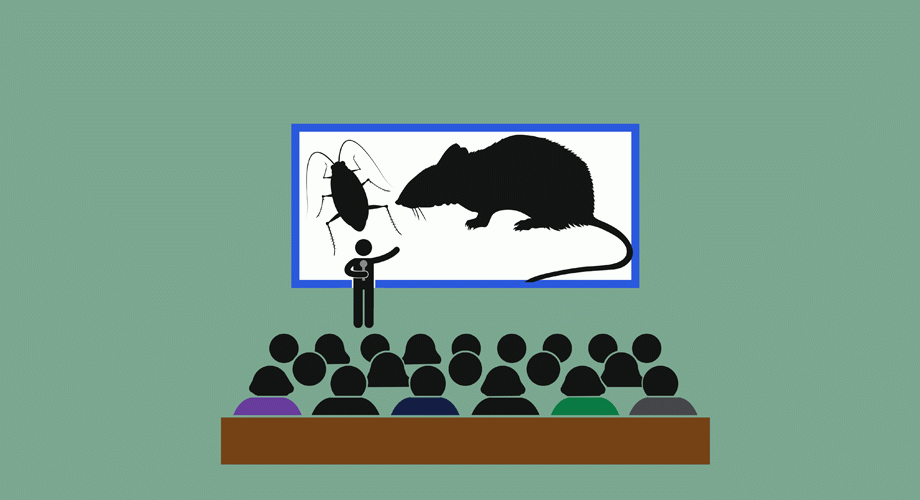Educating staff on the ins and outs of pest management is one of the easiest and most effective ways to avoid costly pest infestations. Pest issues can come into play from a variety of sources, and the comprehensive integrated pest management (IPM) approach is the best way to help keep pest pressures at a minimum.
IPM also puts apartment managers on the offense, versus reactively defending their communities from pests. When employees understand this strategy, they are more likely to contribute as team players.
Pests can cause structural damage, transmit diseases and damage a property’s reputation. Because pest pressure can be detrimental to business, including staff in the IPM plan is more than just an additional task for employees—it’s crucial that they know what to look for and how to report any potential pest activity or conducive conditions. More eyes looking out for pests will increase the likelihood of spotting a problem before an infestation sets in.
Apartment managers can take the opportunity to help their employees learn the science behind pests and the options to help manage related issues by following these steps:
Request onsite training session. Most reputable pest control providers offer complimentary and customized staff training. Request an onsite session to discuss the basics of IPM and educate employees about signs of pest activity, conducive conditions and pest hot spots specific to the property.
Conducive conditions are environments and physical conditions, such as excessive condensation or improper drainage, within or around the establishment that are favorable for pest activity. Hot spots are key areas that pests can target as entry points or potential breeding grounds, such as cracks, crevices and receiving and storage areas. Apartment professionals should partner with a pest management provider to help identify whether any specific issues need to be addressed or if additional training, such as protocol for bed bugs, should be completed.
For example, RAM Partners properties require all onsite associates, including leasing personnel and maintenance staff, to participate in an annual training session on bed bug education and protocol. “The training session helps our staff become more knowledgeable and comfortable explaining the issue to residents,” says Anne Berry, RAM Partners Corporate.
Assign roles. Pests can attack from all angles, but staff members can help get ahead of potential entry points and conducive conditions. Consider assigning each employee to a specific pest management role based on their daily responsibilities.
For example, a person who handles sanitation should monitor for and clean any liquid or products spills. The team member responsible for exterior maintenance should monitor for holes or gaps in the building’s exterior and seal them. Give each person just one or two responsibilities that align with their daily activities to keep the complication to a minimum, allowing employees to come together to cover the entire property.
Continue education. Once employees familiarize themselves with the basics of the IPM program and understand their role, it’s important that the information doesn’t become out of sight, out of mind. Ask a pest management professional for educational materials to share with the entire staff.
Tip sheets and checklists providing best practices will help employees improve the property’s sanitation and maintenance routines. Consider including a few seasonal pest management tips in the property’s monthly newsletter or other publications.
Monitor pest activity. Ongoing monitoring is of the utmost importance to spot pests. Many pests tend to come out at night when the facility is quiet, but that doesn’t mean they don’t leave evidence of activity.
For instance, rodents are constantly gnawing, so look for chew marks around utility openings in the facility and along base boards and door frames. Rodents have poor eyesight so they will often travel against a wall, leaving greasy rub marks as a trail to follow and leaving droppings.
A black light can be used to detect rodent urine marks. Insects are a bit harder to track down than rodents, but a pest management professional has tools to help employees monitor for these pests. Use glue boards and sticky traps to monitor for, and trap, crawling pests.
Set pest protocol. A pest sighting protocol matched with pest thresholds will guarantee that everyone knows how to communicate pest activity to both apartment management and the pest management professional as they monitor for pest issues daily.
RAM Partners has implemented a five-step protocol for potential bed bug sightings, and has significantly reduced the number of incidents and related costs across their 30,000 properties nationwide.
Examples of steps that can be included in pest-sighting protocol are:
- Catch a specimen so a pest management professional can properly identify it and determine appropriate treatment steps.
- Keep a log of when, where and how many of the pests were spotted so a pest management professional can help identify where it gained access to the building.
- In case of a bed bug sighting, communicate the importance of leaving the room undisturbed and reporting the issue immediately.
To help ensure a win against pests in and around the property, employees need to be active in supporting pest management efforts. Educating staff members can help increase monitoring and decrease pest activity year-round.
Dr. Zia Siddiqi is Director of Quality Systems for Orkin. He is a board-certified entomologist with more than 35 years in the industry.
